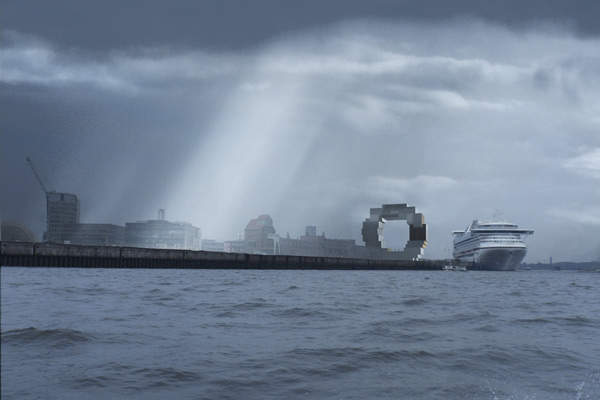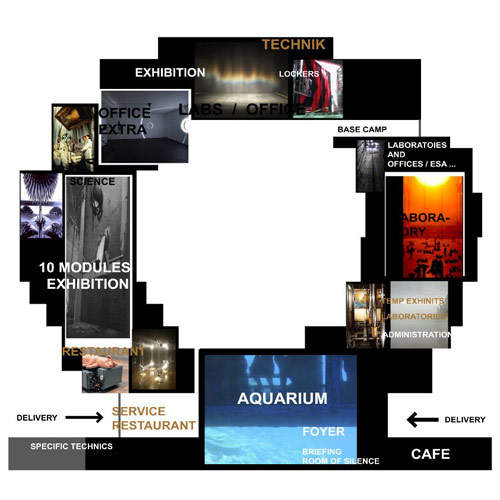The Hamburg Science Centre was planned to help regenerate the port area, downtrodden despite being the second-largest in Germany.
Designed for the client G&P and ING Bank, the science centre was to become the focal point of a city that remained relatively unaffected by the wartime tribulations further east. However, the project has been shelved.
Sitting at the end point of an axis through Hamburg from the inner, lake-like part of the River Alster to the River Elbe, the 23,000m² science centre by Rotterdam architecture star Rem Koolhaas, of the Office of Metropolitan Architecture (OMA), would not only have provided an attractive introduction to this bustling commercial centre, but also created a place for the next generation of German scientists to study and share knowledge.
Binnewies was the engineering consultant, HHP, Berlin was the fire services consultant, Ducks Scéno designed the scenography and LKL was the lighting consultant.
Furthermore, the science centre was to become part of the HafenCity – which has been tipped to be Europe’s largest inner city development when completed in around 2025.
The 157ha HafenCity, being constructed in a formerly neglected part of the harbour, will also host designs by other leading architects, including Renzo Piano and Herzog & de Meuron, and be home to 12,000 people and about 40,000 employees.
Hamburg Science Centre complex
According to OMA, the Hamburg Science Centre complex would have comprised the science centre itself as well as offices, a theatre, shops, a restaurant, an aquarium and a science theatre, right at the entrance to Magdeburger harbour.
Some 8,500m² of the complex was planned to be underground.
The building, situated at the waterfront in close proximity to container and cruise ships, would have marked the connection between the harbour and the city, according to OMA.
Ten modular blocks would have been connected to form a 14-storey, 73m-high ring whose scale, shape and size OMA believed was reminiscent of the character of the original, historical urban waterfront development. OMA’s design, rising up against the sea, was intended to symbolise Hamburg’s economic strength, combined with its interest and standing in science and technology.
The vertical hoop-like structure at the entrance to the harbour, with the presence of cruise and container ships nearby, would have added to the impression of scale.
An exhibition space was to be created on a modular principle similar to that used in the main science centre building, with a view to giving future curators maximum freedom and flexibility in designing their exhibitions and shows.
Sustainable tourist attraction
The science centre design would have addressed not only environmental issues but also sustainability, according to OMA.
The function of the ten blocks that make up the building would have allowed for large scale programmatic changes on a daily basis.
The central structure would have accommodated the vertical circulation whereas the blocks on the west and east side were to be used as exhibition spaces.
Exhibition curators may, for example, generate shortcuts, changes or create connections between displays by means of moveable partitions.
Hamburg is also one of the most popular tourist destinations in Germany, and the HafenCity development was an expected additional draw.
Visitors would start their tour of the science centre at a ‘base station’ below the building’s roof, cross down through the exhibition halls and descend via the modular blocks through various scientific displays.
A large portion of the underground area was to be used by the aquarium. Three terraces on different levels would have allowed panoramic views of Hamburg itself and Magdeburg Harbour west and east.
Various events taking place on top of the individual plateaus of the building as well as the restaurants on the terrace of the Belle Etage would have stimulated activity in the HafenCity.
OMA partners Rem Koolhaas and Ellen van Loon, with Marc Paulin as project architect, had previously collaborated on the NM Rothschild & Sons offices in London and Rome’s Mercati Generali.
Not only would the Science Centre have been linked to many other [science and educational] institutes in Hamburg, but it would have also become the generating force for innovative education and be a cultural highlight in itself.





